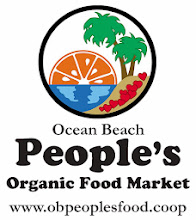This article was originally published by the Huffington Post on October 19, 2013.
Just three days ago, Mexico banned genetically engineered corn. Citing the risk
of imminent harm to the environment, a Mexican judge ruled that, effective
immediately, no genetically engineered corn can be planted in the country. This
means that companies like Monsanto will no longer be allowed to plant or sell
their corn within the country's borders.
At the same time, the County Council for the island of Kauai passed a law that
mandates farms to disclose pesticide use and the presence of genetically
modified crops. The bill also requires a 500-foot buffer zone near medical
facilities, schools and homes -- among other locations.
And the big island of Hawaii County Council gave preliminary approval to a bill
that prohibits open air cultivation, propagation, development or testing of
genetically engineered crops or plants. The bill, which still needs further
confirmation to become law, would also prohibit biotech companies from operating
on the Big Island.
But perhaps the biggest bombshell of all is now unfolding in Washington state.
The mail-in ballot state's voters are already weighing in on Initiative 522,
which would mandate the labeling of genetically modified organisms (GMOs).
Knowing full well that 93 percent of the American public supports GMO labeling,
and that if one state passes it, many others are likely to follow, entrenched
agribusiness interests are pulling out all the stops to try to squelch yet
another state labeling effort.
This time, however, things aren't going quite as planned. On Wednesday,
Washington state Attorney General Bob Feguson filed a lawsuit against the
Grocery Manufacturers Association (GMA). The GMA, a lobby for the junk food
industry, has been by far the largest donor to efforts to defeat the labeling
initiative. The lawsuit alleges that the GMA illegally collected and spent more
than $7 million while shielding the identity of its contributors.
The source of the money has now been exposed, and it turns out to be Pepsico,
Coca-Cola, NestleUSA, General Mills and a few other junk food companies. The
lawsuit reveals that GMA leadership held a series of secret meetings to plot how
to perpetrate a money laundering scheme and illegally hide member donations from
Washington state voters, in direct violation of campaign disclosure laws.
Unlike the junk food companies that feared consumer backlash, Monsanto hasn't
even bothered to hide the more than $4 million the company has given to the "no"
campaign. In fact, GMA, Monsanto and a handful of other corporate donors have
now broken a state record by pouring more than $17 million into their effort to
stop Washington's GMO labeling ballot initiative.
Voting is already underway in Washington, and the final ballots will be cast on
November 5. The "yes" side is ahead in the most recent polls, but supporters of
the right to know fear that a barrage of heavily funded and misleading ads could
sour voters to the initiative.
They remember that just last year, California's Proposition 37 was well ahead in
the polls until Monsanto and its allies spent more than $46 million on their
campaign in the Golden State.
All this label fighting and money laundering leads to some very significant
questions. Why are Monsanto and the junk food industry willing to spend many
tens of millions of dollars every year trying to keep you in the dark about your
food? What doesn't big food want you to know? And what are they afraid might
happen if you did?
Monsanto tells us that their products are about the best thing to come along
since sliced bread. For years they've been promising that GMOs would reduce
pesticide use, increase yields, reduce water consumption, and offer foods that
are more tasty and more nutritious.
I wish they were right.
But in the 20 years since GMO crops first came on the market, studies have found
that they have led to higher pesticide use, and no meaningful improvement in
flavor, nutrition, yield or water requirements. Instead, what they've created
are plants that are engineered to withstand massive dosing of toxic herbicides,
and plants that function as living pesticide factories. Monsanto's Bt. corn, for
example, is actually registered with the EPA as a pesticide.
With concern about GMOs growing fast, and with the public being pummeled with
vast amounts of misinformation, there is a tremendous need for clear, accurate
and reliable information about GMOs. In response, the 100,000+ member Food
Revolution Network and the Institute for Responsible Technology are
co-sponsoring a free online GMO Mini-Summit. From October 25-27, some of the top
GMO experts on the planet will be providing insights and clear calls to action
in this teleseminar that is also being broadcast without charge on the Internet.
Monsanto probably isn't too happy about the prospect of tens of thousands of
people getting informed and mobilized. But if you love life, safe food, and the
truth, then you might want to check it out.
And if you want to lend a hand to getting out the vote in the state of
Washington, you can sign up to volunteer here.
http://yeson522.com/volunteer-for-yes-on-522/
Nobody knows what's going to happen in Washington between now and November 5.
But from Mexico, to Hawaii and to the 64 nations that already have GMO labeling,
this tide just might be turning.
Maybe we, the people, do get a say in what we know, and what we eat, after all.
Ocean Robbins is co-author of Voices of the Food Revolution, and serves as
adjunct professor for Chapman University and CEO and co-host (with best-selling
author John Robbins) of the 100,000+ member Food Revolution Network. The GMO
Mini-Summit starts October 25. Find out more here.
http://gmosummit.org/



